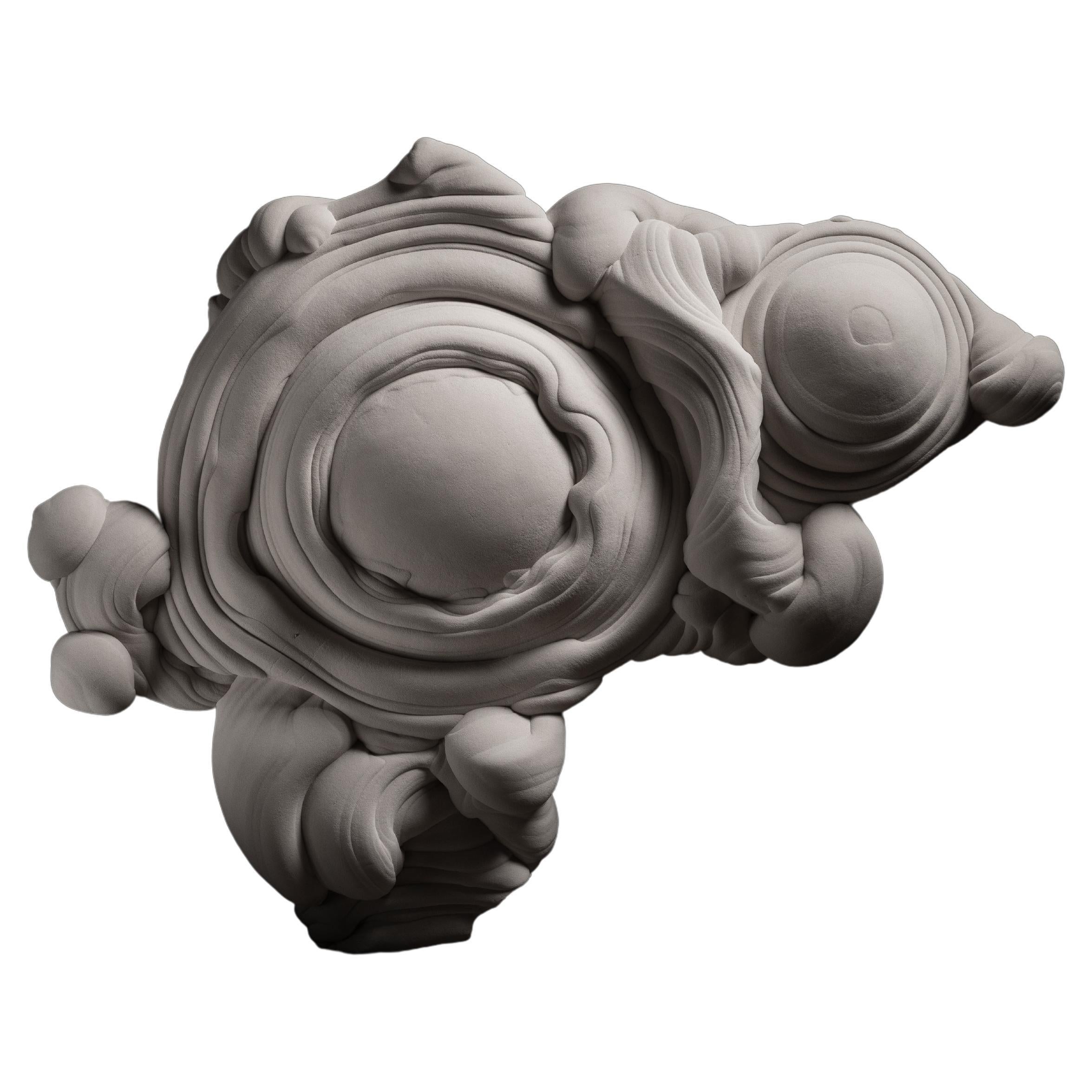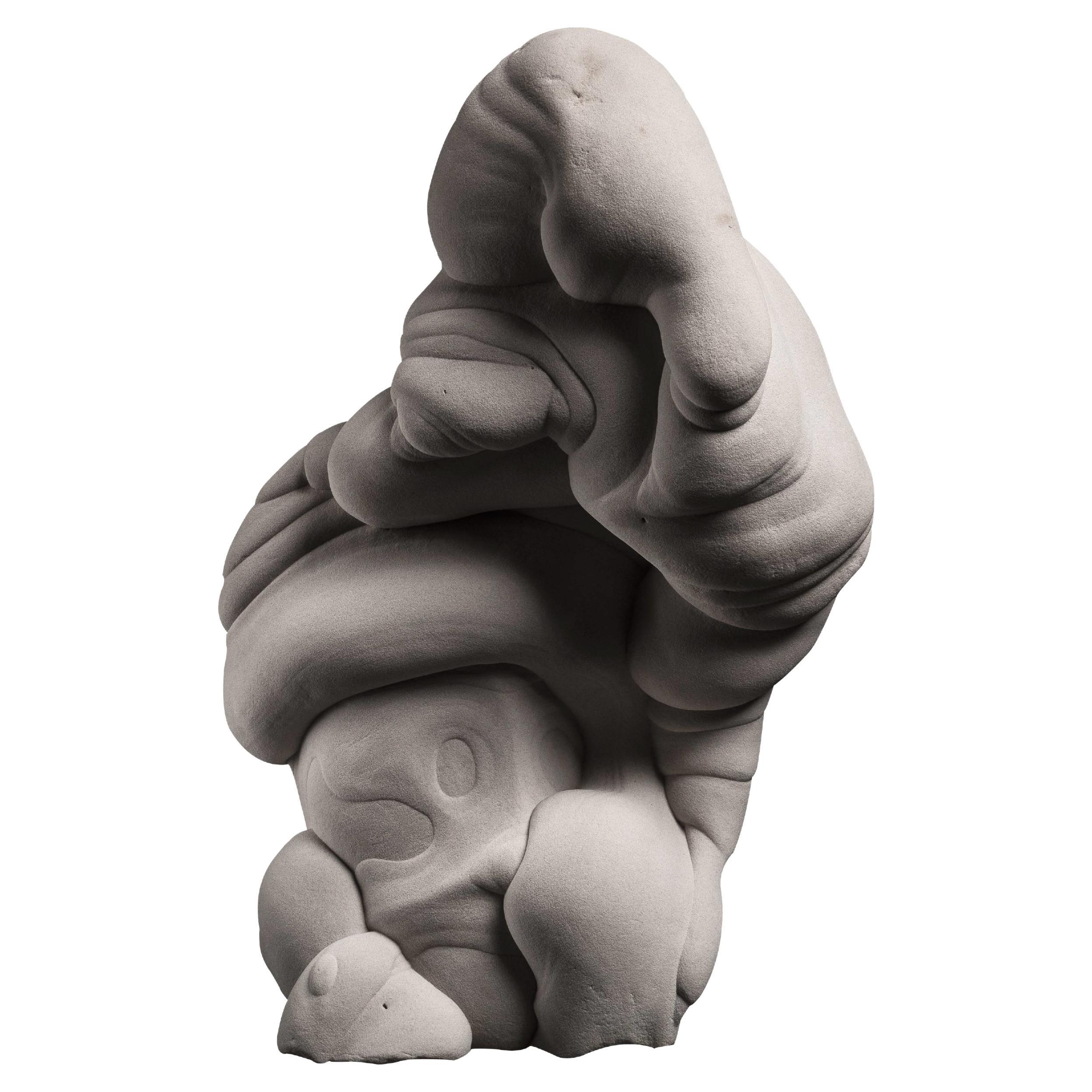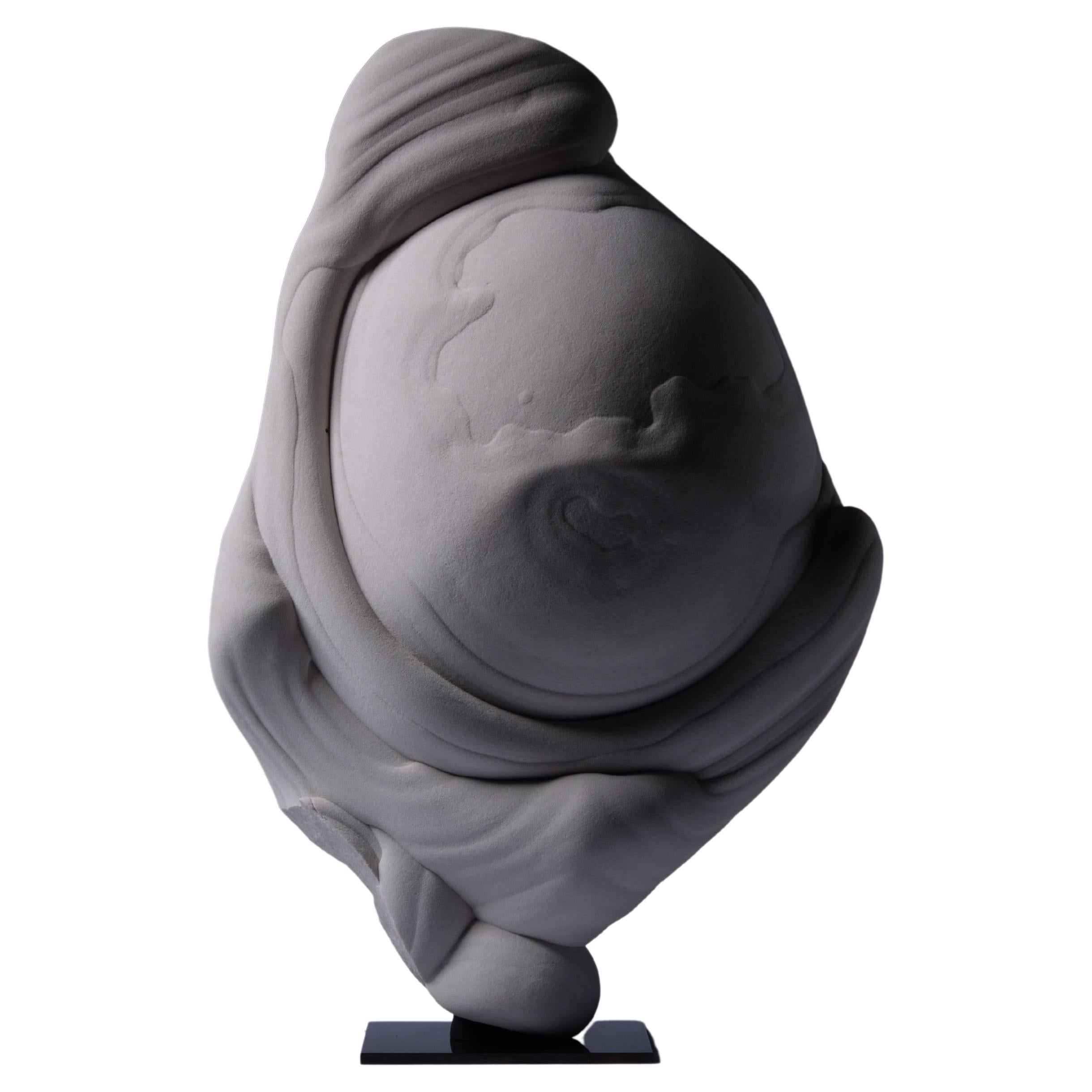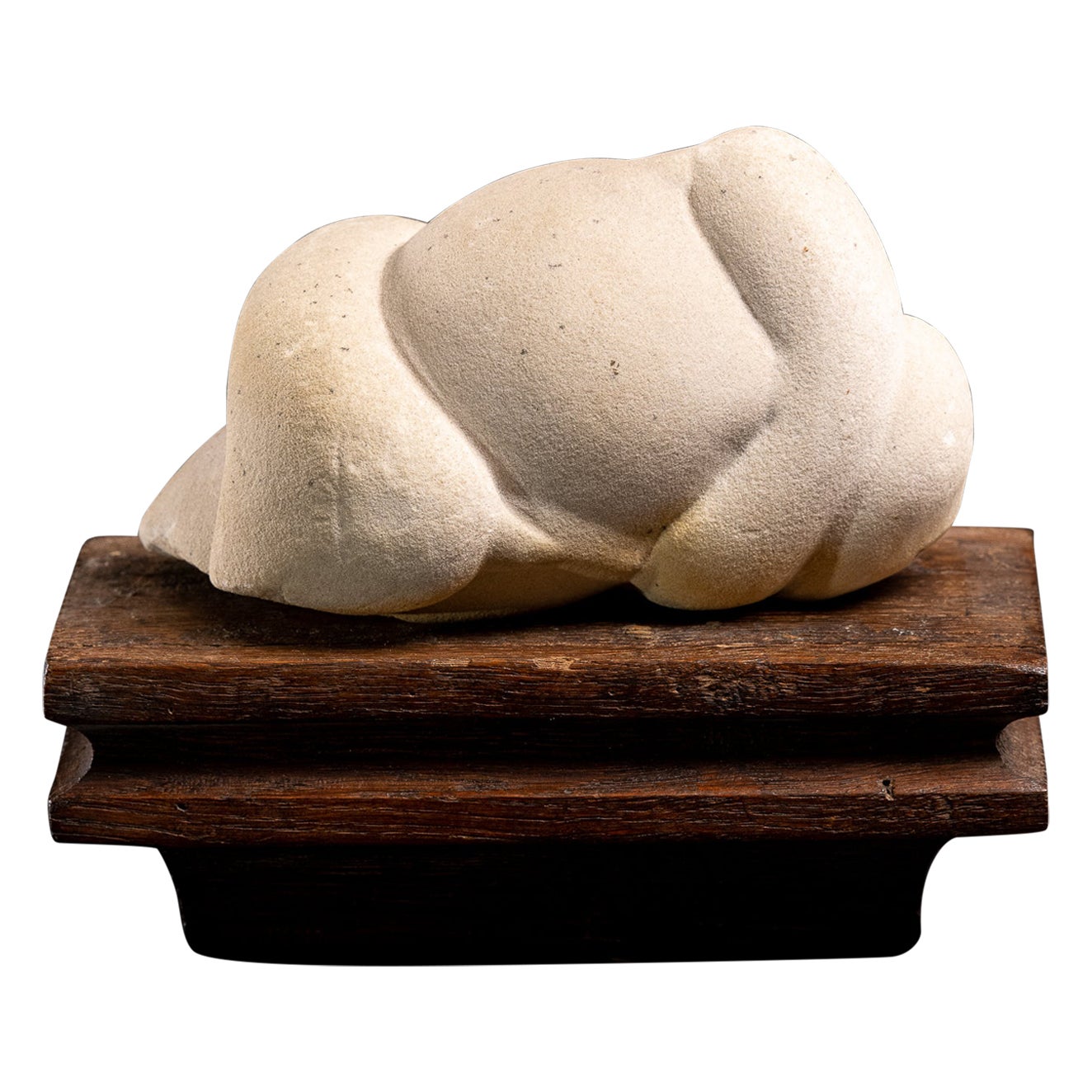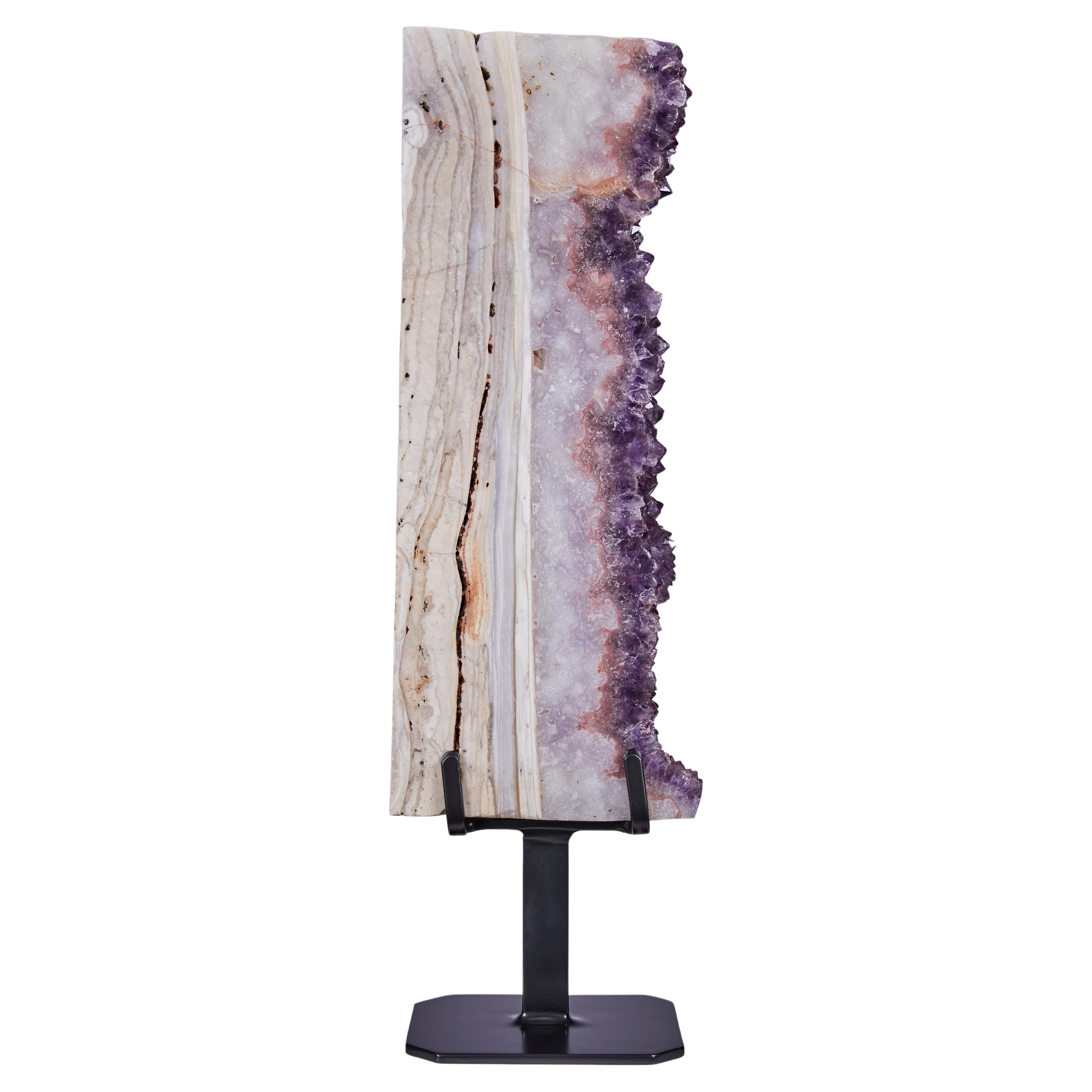Items Similar to Large Natural Gogotte Formation
Video Loading
Want more images or videos?
Request additional images or videos from the seller
1 of 15
Large Natural Gogotte Formation
About the Item
A Gogotte Formation
Of natural form, dating from the Oligocene period (30 Million years ago). Beguiling natural mineral formation, they are the result of calcium carbonate binding with extremely fine quartz crystals found in the mineral rich waters of Fontainebleau, France.
The cloud like, dream inducing bulbous appearance is different and unique to each example. The blend between nature and art has elevated these unusual natural phenomenon to international popularity.
Historically Gogottes have been lauded for their aesthetic, indeed Louis XIV (The Sun King) was hugely enamoured and requested more to be found in Fontainebleau so he could decorate his Palace gardens with them. Indeed those same examples can be seen at Versailles today.
We can see the inspiration gogottes provided for artists into the 20th Century, most notably figures by Henry Moore. In 2017 a Large Gogotte was presented to the Natural History Museum in London in honour of Sir David Attenboroughs 90th Birthday.
- Dimensions:Height: 24.41 in (62 cm)Width: 26.78 in (68 cm)Depth: 10.24 in (26 cm)
- Materials and Techniques:
- Place of Origin:
- Period:
- Date of Manufacture:Circa 30 Million Years Old
- Condition:Additions or alterations made to the original: Mounted to a Bespoke display stand for presentation. Wear consistent with age and use. Minor losses. Minor structural damages. Minor fading.
- Seller Location:Pease pottage, GB
- Reference Number:1stDibs: LU2371339149452
About the Seller
4.9
Vetted Seller
These experienced sellers undergo a comprehensive evaluation by our team of in-house experts.
Established in 2014
1stDibs seller since 2016
149 sales on 1stDibs
Typical response time: 7 hours
- ShippingRetrieving quote...Ships From: Pease pottage, United Kingdom
- Return PolicyA return for this item may be initiated within 7 days of delivery.
More From This SellerView All
- Romanesque Antique Carved Stone HeadLocated in Pease pottage, West SussexEngaging Romanesque Antique Carved Stone Head, intriguing linear incised hair, tightly curled beard and moustache, wide eyes and pronounced e...Category
Antique 15th Century and Earlier French Figurative Sculptures
MaterialsLimestone
- Late 19th Century Imposing Louis XIV Carved Stone BustLocated in Pease pottage, West SussexExceptional, imposing late 19th century carved stone bust of Louis XIV of France, in his regalia. Wonderful patina.Category
Antique Late 19th Century French Busts
MaterialsStone
- Monumental Pair of Bronze Wall Lanterns in Natural Verdigris PatinationLocated in Pease pottage, West SussexTruly magnificent pair of bronze wall hung porch lanterns, simply vast scale, excellent natural verdigris patination. Fine crisp casting. Beautifully manufactured. England, Early 2...Category
Early 20th Century English Wall Lights and Sconces
MaterialsBronze
- Large Primitive Shrine or Roof GuardianLocated in Pease pottage, West SussexLarge Primitive Carved Wood Shrine or Roof Guardian, well weathered surface & beautifully sculptural. Western Nepal Circa 1900Category
Early 20th Century Nepalese Sculptures and Carvings
MaterialsWood
- Large Naive Swedish Painting or BonadLocated in Pease pottage, West SussexLarge, Primitive Swedish Bonad, Painted on thick heavy canvas and mounted to board, faux marble painted frame. Sweden Circa 1920.Category
Early 20th Century Paintings
MaterialsCanvas
- Impressive Large Spanish Iron and Mesh LanternLocated in Pease pottage, West SussexImpressive large scale iron and mesh lantern, wired for interior use, trio of bulb holders to the interior. Rewired and ready to hang (UK wired). Spain Circa 1950.Category
Vintage 1950s Spanish Lanterns
MaterialsIron
You May Also Like
- Natural Gogotte FormationLocated in London, GBA magnificent example of a gogotte formation composed of thick swirls and folds of sparkling sandstone. Discovered in the Oligocene sand dunes of Fontainebleau, France, formed circa 30 million years before present or later. The incredible, almost otherworldly appearance of gogottes may easily be mistaken for the work of a most talented artist. In fact, these sandstone sculptures are entirely natural in origin. They have been found in multiple locations but those from Fontainebleau, such as the present example, are the most remarkable. Thirty-five million years ago, a sea covered what is now the forest of Fontainebleau, and dunes of exceptionally fine and homogenous sand formed. As silica-rich water filtered through this sand, it turned into stone. The flow of water finely modelled the sandstone into the aesthetic concretions we now know as gogottes. These are rare and are only found sporadically several metres deep into the ground. They owe their sparkling white appearance to the extreme and unmatched purity of the Fontainebleau sand, sometimes reaching a composition of 99.9% silica. Each of them is unique – a masterpiece slowly fashioned by the hands of Nature. The intriguing name of “gogotte” was coined by French geologist Claude Guillemin (1923- 1994), who was inspired by the children’s book series Babar the Elephant. In one of the books, a group of monsters called Gogottes are shown hiding behind rocks. These rocks reminded Guillemin of the sandstone concretions...Category
Antique 15th Century and Earlier Natural Specimens
MaterialsOther
- Natural Gogotte FormationLocated in London, GB'Louis XIV' Gogotte Formation Measures: circa 30 Million y/o 105 x 76 x 15 cm A magnificent example of a gogotte formation, nicknamed Louis XIV, composed of thick swirls and folds of sparkling sandstone. Discovered in the Oligocene sand dunes of Fontainebleau, France, formed circa 30 million years before present or later. The incredible, almost otherworldly appearance of gogottes may easily be mistaken for the work of a most talented artist. In fact, these sandstone sculptures are entirely natural in origin. They have been found in multiple locations but those from Fontainebleau, such as the present example, are the most remarkable. Thirty-five million years ago, a sea covered what is now the forest of Fontainebleau, and dunes of exceptionally fine and homogenous sand formed. As silica-rich water filtered through this sand, it turned into stone. The flow of water finely modelled the sandstone into the forms we now know as gogottes. These are rare and are only found sporadically, several metres buried underground. They owe their sparkling white appearance to the extreme and unmatched purity of the Fontainebleau sand, sometimes reaching a composition of 99.9% silica. Each of them is unique – a masterpiece slowly fashioned by the hands of Nature. The name “gogotte” was coined by French geologist Claude Guillemin (1923- 1994), inspired by the children’s book series Babar the Elephant...Category
Antique 15th Century and Earlier French Natural Specimens
MaterialsSandstone
- Natural Gogotte FormationLocated in London, GBA magnificent example of a gogotte formation composed of thick swirls and folds of sparkling sandstone. Discovered in the Oligocene sand dunes of Fon...Category
Antique 15th Century and Earlier Natural Specimens
MaterialsSandstone
- Gogotte FormationLocated in London, GBGogotte formation circa 30 Million y/o Measures : 42 x 21 x 63 cm. A magnificent example of a gogotte formation, composed of thick swirls and fo...Category
Antique 15th Century and Earlier French Natural Specimens
MaterialsSandstone
- Small Gogotte De Fontainenbleue, Natural Mineral SculptureLocated in Leuven , BEA nice example of a gogotte formation composed of thick swirls and folds of sparkling sandstone. Discovered in the Oligocene sand dunes of Fontainebleau, France, formed circa 30 mill...Category
Antique 15th Century and Earlier French Natural Specimens
MaterialsSandstone
- Large columnar agate and amethyst formationLocated in London, GBStriking large vertical presentation displaying vibrant purple amethyst bordered by a thick agate layer. One of a group of four impressive specimens. Pieces such as this are hard t...Category
Antique 15th Century and Earlier Uruguayan Natural Specimens
MaterialsAgate, Amethyst, Quartz
